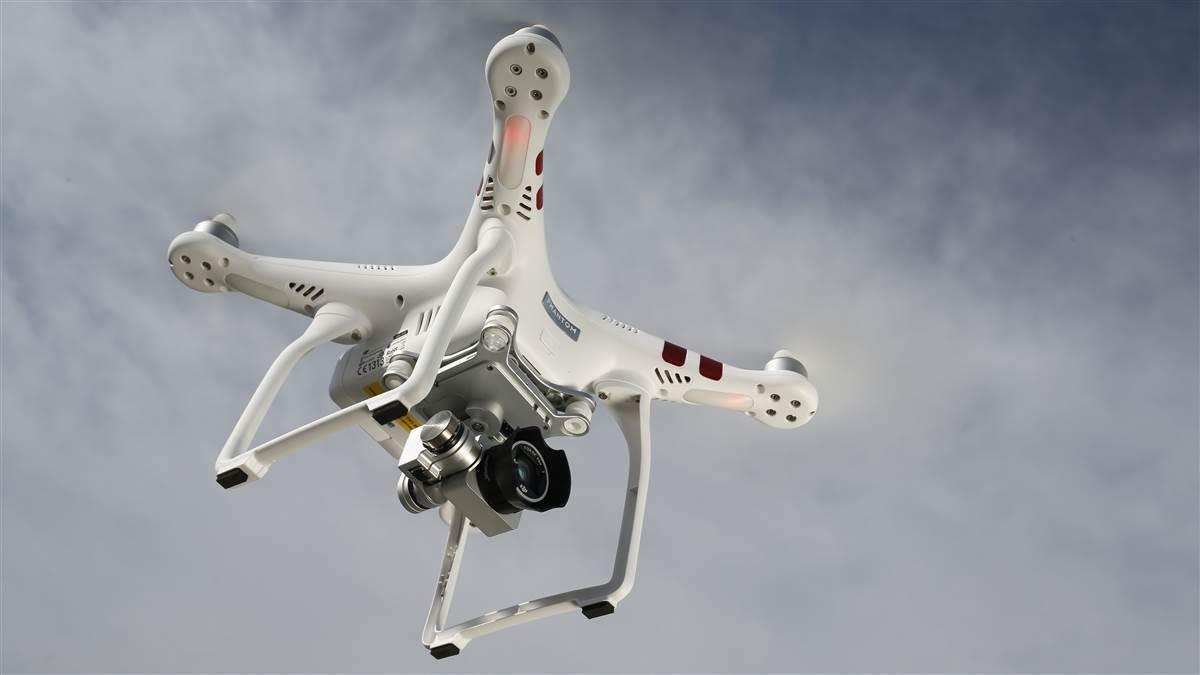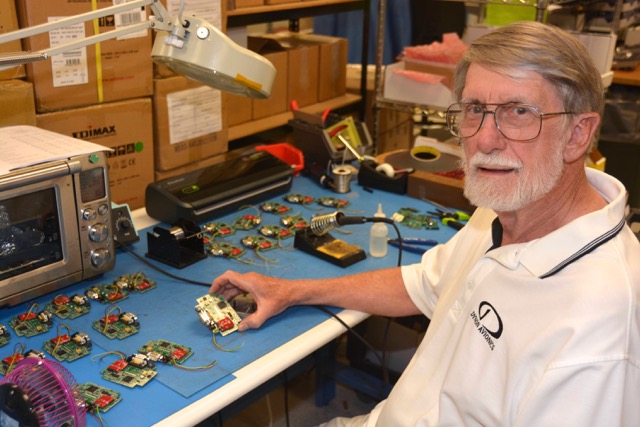Pilot Briefing News: Announcements from HAI
Helicopter training highlights show
By Mike Collins
The Helicopter Association International’s annual meeting and trade show, Heli-Expo, saw a number of announcements related to helicopter training.

The Helicopter Association International’s annual meeting and trade show, Heli-Expo, saw a number of announcements related to helicopter training.
Redbird Flight Simulations came to Heli-Expo for the first time, showcasing its new Redbird VTO—designed to help teach hovering and autorotations. The company displayed the trainer at events such as EAA AirVenture and Sun ’n Fun while it was under development, and a Redbird employee said the product is now ready for evaluation by an audience of experienced helicopter operators. FAA approval of the device is expected soon. Pricing for the Redbird VTO starts at $149,800.
Sikorsky has chosen Bristow Group as its preferred supplier for ab initio pilot training for Sikorsky aircraft customers at Bristow Academy. The companies are working to complete a long-term agreement that will offer Sikorsky Black Hawk, S–70i, S–92, S–76, and light helicopter customers a Sikorsky-certified training curriculum taught by Bristow Academy’s instructors.
Cobham Helicopter Services, which has been involved in training helicopter pilots and aircrew for more than 18 years, is expanding the reach of its helicopter training capabilities by establishing the Cobham Helicopter Academy. The academy will offer a unique blend of military and commercial experience and expertise, providing training from ab initio to special missions such as search-and-rescue and tactical operations.
Middle Georgia State University displayed one of its new Guimbal Cabri G2s training helicopters at Heli-Expo. Instructors at the university in Eastman, Georgia, recently completed their training in the new aircraft. Middle Georgia State—which operates a fleet of 25 Piper airplanes, including Warriors, Archers, Arrows, and Seminoles; three Schweizer 300 CBis; a Robinson R44; and the two new Guimbal Cabri G2s—has a 20-year accident-free training record.
FlightSafety International now offers FAA-approved Part 142 night vision goggle initial training for the Airbus Helicopters H135, Bell 212, and Bell 412EP using Level D-qualified simulators. FlightSafety also introduced an NVG eLearning recurrent course. The initial training “is designed to provide in-depth instruction on the equipment and focus on the efficient and effective use of the goggles through scenario-based and mission-specific exercises. It includes eight hours of ground school and eight hours of training in an advanced Level D-qualified simulator,” the company said.
Email [email protected]
Drones
Bridging the drone divide
Rotorcraft aviators take inclusive approach
By Jim Moore
Helicopter operators who once viewed drones with distrust and apprehension are increasingly inclusive in their approach to unmanned aviation. Drone-relevant education and outreach provided at the Helicopter Association International's 2017 Heli-Expo convention marks a transition for the show.
HAI Director of Public Relations and Communications Dan Sweet previously worked for a helicopter operator in Oregon, and brings to his new job the perspective of a manned aviator who has seen the risk posed by drones firsthand.
“We were grounded a couple of times by drones,” Sweet said. He said he was too new on the job to present an official HAI position on drones, but said there’s growing consensus in the industry that drones are here to stay.
Sweet said he was not surprised that AOPA has begun accepting remote pilots as full members (see “Membership News & Notes,” page 102). He said recreational pilots are still flying too often without knowledge of (or regard for) the rules. “It’s not the professionals that are doing it,” Sweet said, echoing a widely held view among industry observers and insiders. “It’s the hobbyists.”
 DJI (the worldwide civil drone market leader) was among several drone companies that exhibited at Heli-Expo. In addition to exhibits, the convention kicked off with an HAI Safety Symposium on UAS. Also presented was an FAA overview of current UAS research, two presentations on “Cultivating a Safety Culture in Every UAS Enterprise,” and a review of Part 107 that detailed steps required to obtain a remote pilot certificate. That is no coincidence: A growing number of manned helicopter operators are adding drones to their fleets.
DJI (the worldwide civil drone market leader) was among several drone companies that exhibited at Heli-Expo. In addition to exhibits, the convention kicked off with an HAI Safety Symposium on UAS. Also presented was an FAA overview of current UAS research, two presentations on “Cultivating a Safety Culture in Every UAS Enterprise,” and a review of Part 107 that detailed steps required to obtain a remote pilot certificate. That is no coincidence: A growing number of manned helicopter operators are adding drones to their fleets.
“We know that there are companies like Era down in the Gulf that are using drones for petroleum tower inspections, and [utility company] Eversouce doing power line inspections,” Sweet said. “Our focus is always to try to get them to do it safely…do it the right way.”
Sweet said HAI has taken much the same approach to UAS as AOPA, with new efforts to promote safety through education, inclusion, and collaboration.
Justin Barkowski, AOPA director of regulatory affairs, said AOPA will continue to educate and advocate for safe integration in its various roles, including the association’s membership on the Drone Advisory Committee and Unmanned Aircraft Safety Team, and other inclusive collaborations.
Email [email protected]
Endeavor awards honor Charitable flying
Each May, pilots, astronauts, celebrities, and those who benefit from charitable flying gather to honor the work of volunteer pilots at the Endeavor Awards, this year returning to the California Science Center May 6. Honorees in 2017 include Jeff Bennett, a pilot for Pilots N Paws; retired Army Lt. Col. Dick Stoops, a pilot for Remote Area Medical; and Steve Danz, who will receive the Endeavor 1000 Award for flying 1,000 missions for Angel Flight West.
The 2017 Inspiration Award winner is former US Airways Capt. Chesley B. “Sully” Sullenberger III. While best known for serving as captain of the downed aircraft on the “Miracle on the Hudson,” Sullenberger is a safety expert, speaker, author, and consultant. He serves on the U.S. Department of Transportation’s Advisory Committee for Automation in Transportation.
The Endeavor Awards honor volunteer pilots and provide support to organizations that coordinate their gifts of flight to serve those in need. Every year, thousands of donated flights save lives, provide access to medical care, transport veterans, rescue animals, map environmental data, aid in disaster relief, and contribute to the public good in communities nationwide. The Endeavor Awards were established by Angel Flight West, a volunteer pilot organization that arranges 4,000 flights per year in the 13 western states.
The awards are presented under the Space Shuttle Endeavour, which hangs in the California Science Center. Emcee is Amelia Rose Earhart, who will be joined by actor Greg Kinnear.
The avionics professor
How the global leader in noncertifiedavionics is changing GA
By Kevin Knight
 Last may the FAA made it legal for the Dynon Avionics EFIS-D10A to be installed in type-certificated aircraft, and Dynon’s founder and chief inventor, John Torode, was happy. His passion for aviation started in the early 1950s growing up near Seattle.
Last may the FAA made it legal for the Dynon Avionics EFIS-D10A to be installed in type-certificated aircraft, and Dynon’s founder and chief inventor, John Torode, was happy. His passion for aviation started in the early 1950s growing up near Seattle.
“I was a normal, 10-year-old who was drawing pictures of airplanes in grade school when I should have been studying other things,” he said
Torode attended the Massachusetts Institute of Technology, earning a degree in physics before getting his master’s degree and doctorate in computer science from the University of Washington. He learned to fly in 1966 and was a professor of electrical engineering and computer science at the University of California/Berkeley from 1971 to 1975. He was also an entrepreneur who became chief technology officer at Cypress Semiconductor. One of the last chips he developed was the basis for most of the touchscreen technology in early cellphones, iPods, and iPads.
He founded Dynon Avionics in 2000. It has an estimated 60-percent market share for noncertified avionics, with more than 20,000 airplanes using its technology. Eighty-five employees design and manufacture everything in the company’s headquarters near Seattle.
“I had no grandiose goals other than, Hey, I’m a tech guy. Let’s produce some advanced new technology because I’m in love with aviation.” Torode owns a Cessna 180, Murphy Moose, de Havilland Beaver, and Cessna Citation.
“We were astounded at the response we got from the Experimental community, where our innovations were legal. We expanded our product offerings so we now produce most everything needed for an Experimental plane’s panel,” he said.
“At every airshow pilots would ask, Can I put some of this in my Cessna or Piper or Bonanza or Mooney? We had to tell them, No, but someday.
“We started getting more involved with various FAA committees and the Part 23 rewrite. Segments within the agency recognize noncertified but widely used systems with good track records and pedigrees can help pilots and improve safety. That’s why we got the STC for our D10A. There’s huge demand. ”
At 72, Torode is excited about the future. “The FAA was amazingly helpful on the D10A certification. I think they’re increasingly motivated by safety and are being more thoughtful about what helps.”
Although Dynon’s EFIS and Garmin’s strikingly similar G5 are great first steps, many GA pilots covet large glass panels such as Dynon’s versatile SkyView, and its multi-axis autopilot costing $1,500.
“I was at the front end of the global tech boom. A lot of the breakthroughs came from relentless startups like ours. It wasn’t long before people couldn’t live without smartphones, the internet, and computers. Our hope for the future of aviation is that powerful, affordable avionics like ours will soon be in every GA cockpit. They make flying safer and more fun, and will help attract a new generation of tech-savvy pilots.”
Kevin Knight is a pilot and writer living near Seattle.


